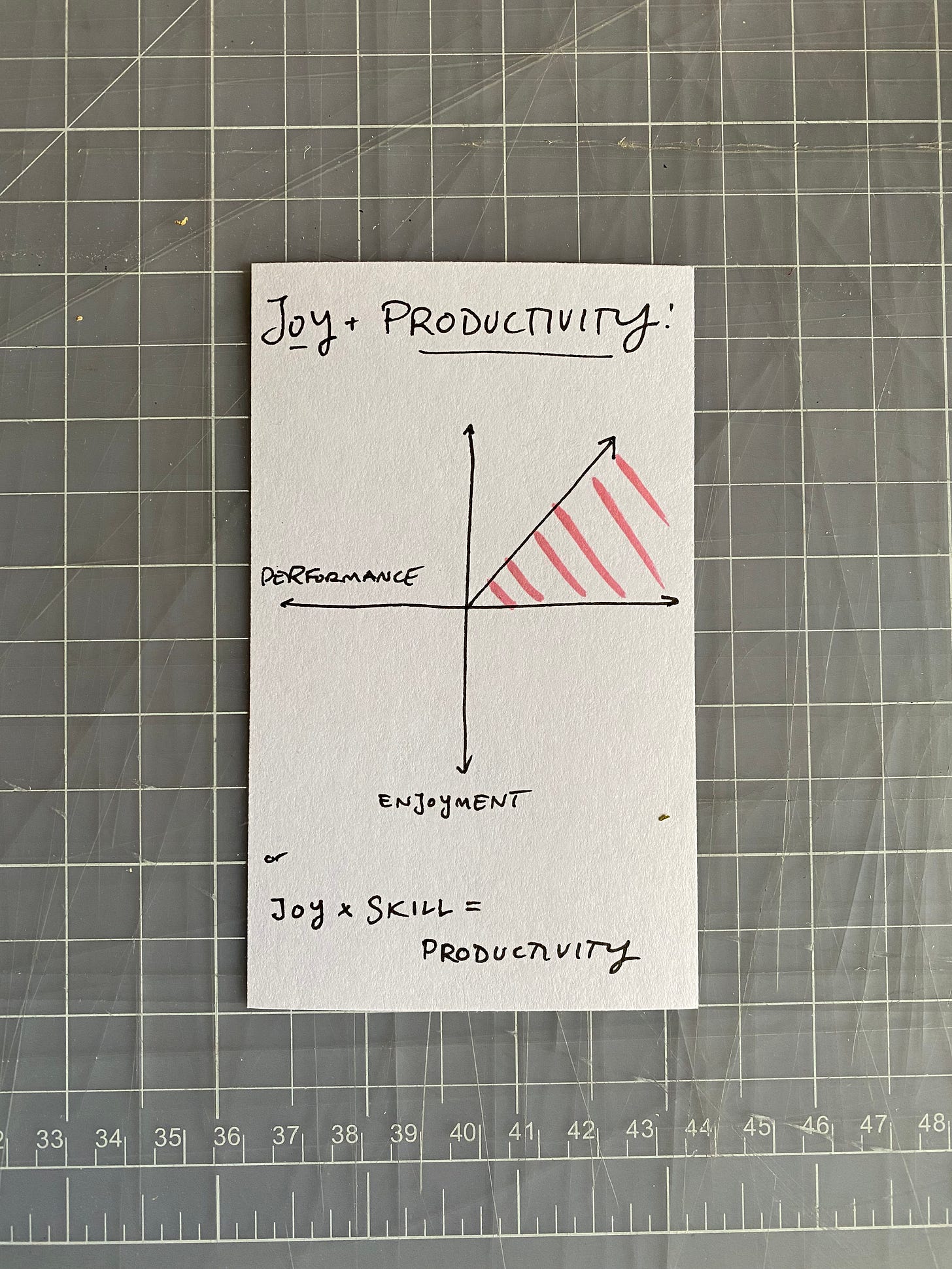Hello friends and lovers-of-wisdom, and welcome back to the Wisdom Workshop Newsletter, where I share experiments in writing and living a good life. This post has been supported by participants in our 15th cohort, on the learning theme of presence.
If you are curious about joining a small group of long-life learners in the most exciting Wisdom Workshop we’ve ever created, send me an email, or schedule an open inquiry with me.
Now onto the essay!
In the week following my 42nd birthday, I found a mysterious small square on the hardwood floor. Just a half-inch wide, it was white with a black 42 printed in the center. I had started this essay two days before.
Wild synchronicity! How did that 42 get there? I asked my partner. She had no idea. Did it fall out from our daughter's giant sticker book? Nope — those numbers only went up to 10. Where did this 42 come from? And what does it mean!?
42, a number with various natural properties
Wikipedia covers the integer’s various mathematical, scientific, religious, and cultural aspects. 42 is, after all, the "Answer to the Ultimate Question of Life, the Universe, and Everything."
But Wikipedia does not address 42 as an age -- i.e., as a midlife station in human development. You turn 21 in America, and that means something. But when you double that, and get to 42? Nothing.
To make up for this, I brushed up on my theories of adult development. What might Erickson, Levinson, Jung, Kegan, and Steiner have to say about this one precious 42?
42, in five theories of adult development
Erik Erikson’s Psychosocial Theory pegs 42 towards the beginning of “Midlife.” Between ages 40 and 65, we want to be generative instead of stagnant. We want to contribute. We want to avoid the stuckness of self-absorption. Also, we balance career and personal growth with the needs of a family.
Daniel Levinson gives us his “Seasons of Life Theory,” and the blockbuster "midlife crisis." During ages 40-45, we reconcile our adolescent dreams with our current reality. We re-evaluate our life choices and priorities.
Carl Jung offers the idea of “individuation.” Midlife, for Jung, was the turning point inward. 42 invites us to integrate the aspects of our psyche. We turn to balancing masculine/feminine and conscious/unconscious. We re-evaluate our values. We embrace our potential for a more personal version of enhanced creativity.
Rudolf Steiner’s Spiritual Development offers seven year cycles of thematic development. From 42 to 49, one’s spirit comes to be more integrated into one's lived experience. Deeper intuition refines discernment and cultivates our imagination. We have the capacity to come to full spiritual integration during this period.
Robert Kegan’s Constructive-Developmental Theory articulates the process of development in a simple and elegant way that isn’t directly related to age. As we begin to author ourselves, we develop a "self-authoring mind." At 42, we may begin to see ourselves, not as what we are authoring, but as the authoring process itself. This is the development of a "self-transforming mind." More on this below.
✍️ Which of these theories, dear reader, stand out to you? Where do you see yourself in your life journey? Are you writing a midlife renewal? I love reading your replies and comments.🤗

42, this one precious life edition
Of all the theories, I’m appreciating the simple elegance of Kegan the most.
In my early 30s, a powerful healer told me: “you’re here to gather people together in the spirit of joy.” I thought she was talking about music.
At the time, I was sort of punishing myself for not authoring myself well enough. Should I be a doctor of philosophy or a traveling musician? Why couldn't I decide? Now, at 42, I am beginning to celebrate the slow roll of the self-transforming mind: I am a teacher AND a musician AND an entrepreneur AND a father AND a writer.
Kegan gives me the permission to not identify with any of these roles — to instead identify with the process of becoming itself. This feels like a huge relief. And a huge invitation.
I am releasing joyous new music with Sean Waters & the Sunrise Genius (it’s coming soon!). I am refining my teaching craft with four different writing classes at CSU. I am building an alternative university for midlife renewal with the people I want to spend the rest of my learning life with. I am developing my leadership and facilitation crafts. I am fathering more joy than I thought could be possible. I am enjoying re-writing this and sharing it with you.
I am transforming!
This all reminded me of one of my favorite Richard Feynman quotes:
"Fall in love with some activity, and do it! Nobody ever figures out what life is all about, and it doesn't matter. . . . Work as hard and as much as you want to on the things you like to do the best. Don't think about what you want to be, but what you want to do. Keep up some kind of a minimum with other things so that society doesn't stop you from doing anything at all."
More on Midlife Renewals
“Here’s How To Find Meaning in Your Midlife Crisis” from Berkeley’s Greater Good Science Center.
My summary of the science of re-imagining midlife from Barbara Bradley Hagerty’s incredible book Life Reimagined: the Science, Art, and Opportunity of Midlife.
My 26-second video on "A First-Rate Second Childhood."
For more on Kegan, check out Natali Mallel’s “How to be an Adult: Kegan’s Theory of Adult Development.”
For more on Jung, check out Maria Popova’s “The Middle Passage: A Jungian Field Guide to Finding Meaning and Transformation in Midlife.”
For more on Erikson, here’s Erik Erikson’s Psychosocial Theory of Adult Development.
For more on Levinson, check the Wikipedia page on the Stage-crisis view.
For more on Steiner, check out Tom Monte’s “Rudolf Steiner’s 7-Year Cycles of Life.”
To the mysterious 42 on my floor, thank you.
Thank you for reading! Wishing you well and good,
Sean
Keep reading with a 7-day free trial
Subscribe to Wisdom Workshop to keep reading this post and get 7 days of free access to the full post archives.





